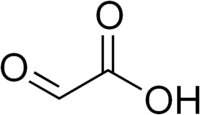
Photo from wikipedia
A carbon-coated LiFePO4 (LFP@C) cathode material was prepared by a bio-template-assisted sol-gel method in which yeast acts both as a structural template and as a carbon source. Citric acid monohydrate… Click to show full abstract
A carbon-coated LiFePO4 (LFP@C) cathode material was prepared by a bio-template-assisted sol-gel method in which yeast acts both as a structural template and as a carbon source. Citric acid monohydrate as a chelating agent was added in different experimental steps to investigate its effect on the crystallinity, specific capacity and electrochemical performance of the positive electrode material LFP. Systematic studies show that LFP@C-3 exhibits the best specific capacity, with discharge capacities of 156.4 mAh g and 97.5 mAh g at 0.1 C and 5 C, respectively. The improved electrochemical properties of the resulting LFP@C-3 can be attributed to its good crystal purity and carbon coating. The chelating agent citric acid has important positive significance when preparing LFP@C by the sol-gel method and using yeast as a structural template.
Journal Title: International Journal of Electrochemical Science
Year Published: 2019
Link to full text (if available)
Share on Social Media: Sign Up to like & get
recommendations!